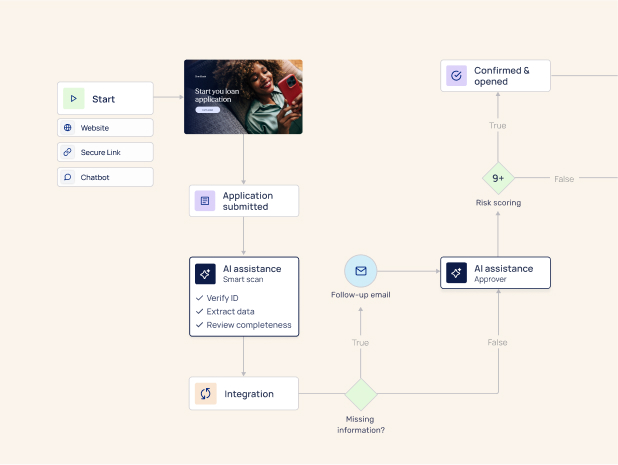Insurance companies are constantly looking for ways to improve their customer service, increase efficiency, and reduce costs. Insurance has always been at the forefront of adopting new technologies to improve their services, and the rise of chatbots and virtual assistants is no exception. These technological advancements are revolutionizing customer service in the insurance industry and changing the way customers interact with their insurers.
Chatbots: The First Step
Chatbots have been around for several years now, and they have already made a significant impact on insurance customer service.
Initially, chatbots paved the way, handling basic inquiries and reducing the workload on human agents. However, as AI progressed, the shift towards more sophisticated Virtual Assistants (VAs) became apparent. This transition not only enhances customer service but also transforms the way insurance companies operate.
- Basic Interactions: Chatbots entered the insurance space offering basic interaction, handling FAQs, and guiding customers through predefined pathways.
- Cost Efficiency: By automating routine queries, chatbots helped in reducing operational costs and improving response time.
- Scalability: With chatbots, insurance companies could easily handle a large volume of customer interactions without worrying about hiring and training additional human agents.
- 24/7 Availability: Chatbots were available round-the-clock, providing customers with instant support and reducing the need for wait times.
However, as technology continues to evolve, chatbots are now being replaced by more sophisticated VAs, which offer a wider range of capabilities.
Virtual Assistants: The Next Level
Virtual Assistants (VAs) leverage artificial intelligence and natural language processing to mimic human interactions. They have the capability to handle complex queries, understand context, and provide personalized recommendations. Here are some key benefits of VAs in the insurance industry:
- Advanced Interactions: Unlike chatbots, VAs are capable of handling complex inquiries, understanding context, and providing personalized responses.
- Learning and Adaptation: With Machine Learning, VAs learn from previous interactions to improve and provide more accurate responses over time.
- Multilingual Support: VAs can communicate in multiple languages, providing a seamless experience for customers across different regions.
- Integration with Systems: VAs can integrate with existing systems and databases, allowing them to retrieve relevant information and provide real-time assistance.
- Omnichannel Support: VAs can be integrated into various channels such as websites, messaging apps, and social media platforms, providing a consistent experience for customers.
With these advanced capabilities, VAs are transforming the way insurance companies interact with their customers. They not only provide support and assistance but also act as valuable data sources, helping companies identify customer preferences and trends. This enables insurance companies to make more informed decisions and improve overall customer satisfaction.

Personalization and Customer Engagement
With the help of machine learning algorithms, VAs can analyze customer behavior and preferences, enabling insurance companies to offer customized products and services. They can also proactively engage with customers for policy renewals
- Tailored Services: VAs offer a personalized experience by understanding individual customer preferences and past interactions.
- Proactive Engagement: They can proactively notify customers about policy renewals, claims status, and other important information
The Next Frontier: Integration with Existing Systems
One of the key benefits of VAs in the insurance industry is their ability to seamlessly integrate with existing systems and databases. This allows for a more efficient and accurate flow of information, reducing manual efforts and increasing productivity.
With the integration of VAs, insurance companies can access relevant customer data in real-time, enabling them to provide personalized recommendations and tailored services.
- Seamless Interaction: VAs can be integrated with existing insurance systems to fetch real-time data, helping in claims processing, policy recommendations, and more.
- Data Analytics: They can analyze vast amounts of data to help insurers in decision-making, fraud detection, and customer segmentation.
Digital Data Collection and Two-Way Integration
AI algorithms run on data. To ensure that customer data collected is accurate and useful for VAs, insurance companies must integrate digital data collection methods and enable two-way integration.
EasySend is transforming the way insurance companies interact with data and their customers. With its no-code platform, any manual process can be digitized without writing a single line of code, making data input easy, intuitive, and efficient. The two-way integration capabilities of EasySend allow it to seamlessly connect with existing systems, retrieving and sending data in real-time. This feature significantly aids Virtual Assistants by providing them with the accurate, real-time data they need to offer personalized services, make policy recommendations, or facilitate claims processing.
- Simplified Data Collection: AI-based VAs can use EasySend to streamline data collection processes, making it easier and more efficient to gather and manage information. This can be particularly useful when VAs need to collect data from various sources or formats.
- Enhanced User Experience: EasySend allows for the creation of digital experiences without coding. This means AI-based VAs can provide users with interactive, easy-to-use interfaces for data submission, thereby improving user satisfaction and engagement.
- Greater Flexibility: No-code platforms like EasySend allow for quick and easy adjustments to data collection processes. This means AI-based VAs can easily adapt to changing user needs or business requirements.
- Time and Cost Efficiency: By eliminating the need for coding, EasySend reduces the time and cost associated with developing and updating digital processes. This can make AI-based VAs more efficient and cost-effective.
- Improved Data Quality: By enabling digital data collection, EasySend can help ensure that the data collected by AI-based VAs is accurate and reliable.
If you have a Virtual Assistant technology that depends on accurate and up-to-date data, EasySend can be an invaluable tool in ensuring the quality of information collected.





